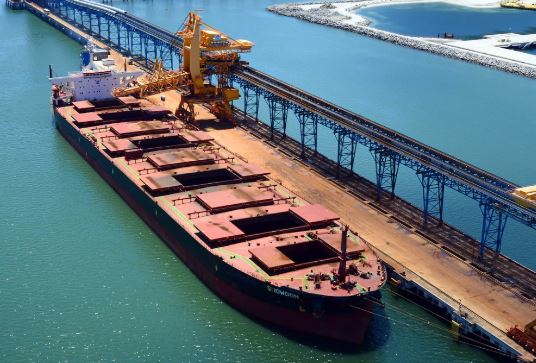Capesize freight rates dipped slightly, amid mixed market movement with firmer rates seen in the Pacific, while falling rates recorded in the Atlantic.
The Capesize 5 time charter average then went down slightly by $48 day-on-day to $12,274 on Thursday, from the mixed market directions.
The Baltic Dry Index (BDI) also dropped slightly by 1% or 12 points to 1,189 readings, due to softening freight rates.
Tales of two basins
Both basins had drifted further apart after the Vale downscaled its iron ore output guidance, which lowered market confidence of the miner in trying to catch up its shipments in the Q4, estimated at around 88 million mt of iron ore cargoes.
Thus, the lengthy ballaster list off Brazil were unlikely to be digested for a while, resulting more bearish market sentiments for the trans-Atlantic and fronthaul markets.
On the other hand, the Pacific market benefited from port closures, bad weather and good iron ore shipping demand in the west Australia to China route.
Mining majors like FMG and BHP were heard to secure vessels to move iron ore from Port Hedland to Qingdao at mid-Dec laycan at higher indicative rates around $7/wmt.
Firmer bunker prices lend support to freight rates
Bunker prices rebounded from previous slump, as the VLSFO rose by $7/mt to $383.50/mt at the port of Singapore, following better crude oil price movement.
The price uptick was due to the OPEC + in finalising decision for a total output cut of 7.2 million barrels per day (bpd) in January 2021, as compared to previous production cut of 7.7 million bpd.
So far, most trade participants had reacted positively to the meeting result as it provided market clarity. This then resulted in higher crude oil prices, with the Brent crude oil prices heading toward $50 per barrel, while the WTI at the $46-47 per barrel range.
